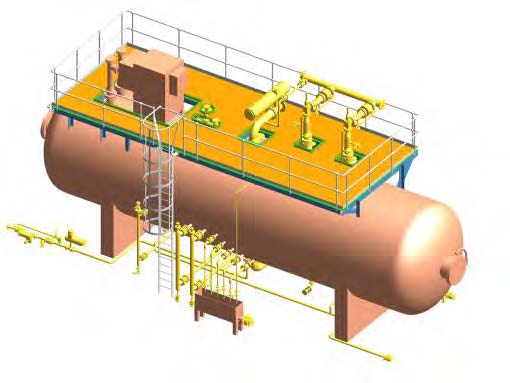Emulsion Treatment Steps
Raed Al-Obaidi
In general, the treatment of water emulsions in crude oil consists of 3 stages:
- emulsion breaking: includes breaking the film that surrounds the water droplet, by the aid of heat and demulsifier.
- water droplet coalescence: water droplets combine with each other after breaking the emulsion and being free forming big droplets, coalescence is a function of time, when there is enough time; more coalescence happens, this happens with the aid of an electrostatic field and water washing.
- settling: because of gravity, bigger droplets settles and go downward the vessel.
These steps should happen consecutively, the main step of all the process is the coalescence, it is the slowest one, it depends on time.
We have to realize that chemical treatment “demulsifier” and thermal treatment “heating” works on breaking the emulsion, while electric treatment helps the droplets coalesce then settle down.
In other words; electric treatment can not break the emulsion alone, and as we mentioned before; coalescence depends on time, so when designing wet crude treatment facilities; it is recommended to increase the coalescence time, increasing the retention time will lead to increasing the water droplets size, but just for a certain value, after that increasing retention tile will be useless, field experiments showed that the ideal retention time is “10-30” minutes, we should increase this time when dealing with heavy crude.
read also Emulsion Treatment.
Heat Effect:
Heating the wet crude will reduce its viscosity, and that in turn will increase the separation speed, according to Stock’s law.
Heating the emulsion will enhance coalescence by increasing the water droplets movement, after collision of small droplets with each other, big droplets will be formed, easy to separate then settle, heat also weaken the emulsion film then break it, it also dissolve the paraffin and asphaltene crystals which reduce their emulsifying effect.
although there are positive effects of heating the wet crude, but there are also some bad effects, for example when heating it we may lose some light compounds, it also may cause the liberation of light hydrocarbons, and this will prevent the coalescence of small water droplets and make them go leave the vessel with oil outlet stream.
When talking about much heat, We have also take into consideration the cost of the equipment and fuel used for heating, so we have to use the optimum heat in the treatment.
Settling
The gravity effect is so important when talking about water separation from crude oil, this operation would be easier when there is a density difference between crude oil and water densities, and the separation will be harder if this difference is decreased.
According to stock’s law, water droplet size affects greatly on this separation, if their diameter increase; the downward velocity will increase also, so the coalescence of these small water droplets to bigger droplets will lead faster separation and settling.
Electricity
When Oil/water emulsion flows through the grids it will be electrically charged, this will make the charged water droplets move in different directions, then collide with each other to form bigger droplets, easy to settle and separate. This operation will be achieved by subjecting this emulsion to a high voltage electric field.
Wash Water ratio
The main purpose of water washing is to remove salts from crude oil, adding water to the oil will reduce the salt concentration, that will help extracting too much salt existing in crude oil, the mixing of wash water and crude oil happens in the mixing valve by maintaining a pressure drop across this valve, you have to notice that higher pressure drops may emulsify the wash water.
But how much wash water do we have to mix with crude oil?
The ideal ration of wash water is “3-5″% from the treated crude.
remember, using little amount of wash water may cause insufficient washing, because the wash water amount will not be enough for dissolving salts.
while using too much wash water will increase the current “excessive current”, or causing a short circuit between the grids, then making voltage leak paths and water carryover with oil outlet, it will also cause higher retention time.
From the above mentioned data, we can conclude that:
Associated Water = Produced Water – Wash Water
Pressure Differential through Mixing Valve
The degree of mixing between wash water and crude oil is a function of pressure differential of the mixing valve, through experiment; we found that the better setpoint for this value is “10-15” psig.

